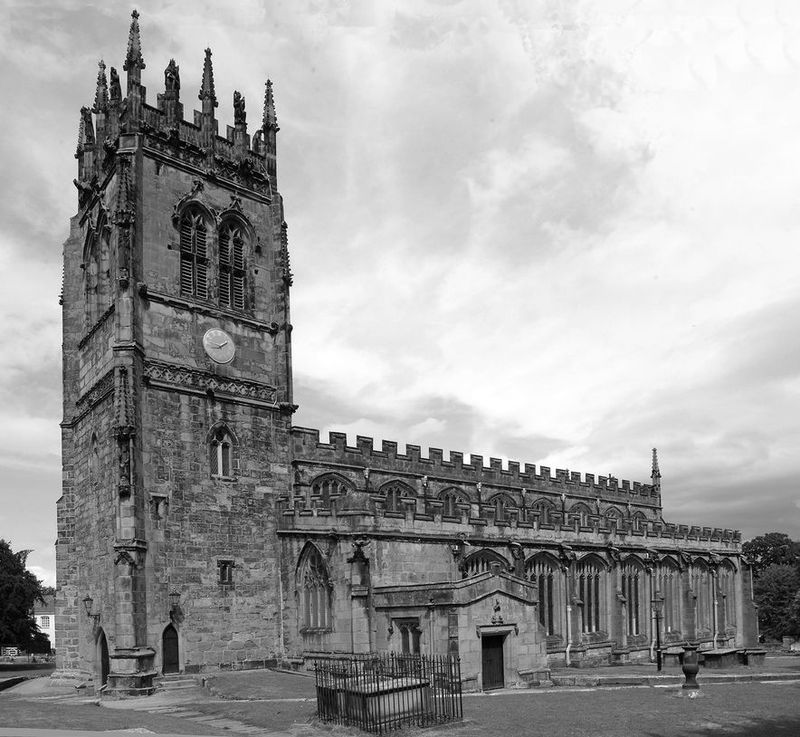All Saints’ Church stands in the former coal mining village of Gresford in Wrexham County Borough, Wales. The bells of the parish church of All Saints is one of the Seven Wonders of Wales. Not only are the peal of bells of note, listed it is said for the purity of their tone, but the church itself is remarkable for its size, beauty, interior church monuments, and its churchyard yew trees.
Though the present edifice was built in the late 13th century by the Welsh patron Trahaearn ap Ithel ap Eunydd (and his five brothers), additions and improvements in the 14th and 15th centuries obscure much of the original building. The very size of All Saints meant that it was probably a place of pilgrimage for centuries, housing a relic or stature of a saint that has since disappeared. Some of the stained glass windows in the church came from the dissolved abbey at Basingwerk on the banks of the River Dee below Holywell. The church was also richly endowed by Thomas Stanley, 1st Earl of Derby, whose intervention at the Battle of Bosworth helped Welsh-born Henry Tudor overcome Richard III in his successful quest for the throne of England.
The twelve misericords date from the late 15th or early 16th century century. Some of these are very evocative, such as “A Devil, erect, driven by a man or woman in long kilted garment, facing left, and , pushing two women on a sledge or barrow into the jaws of Hell. Left Supporter an ape with a urine flask. Right Supporter a fox with a bucket of excrement.
The earliest record of the peal of Gresford bells dates back only to 1714. An apparatus was installed in the belfry in 1877 so that all eight bells could be chimed by one person. The bells are rung regularly for church services, and the old custom of ringing on November 5 is still continued, though it is unclear whether this is to commemorate the successful landing of William of Orange in 1688, or the Gunpowder Plot of Guy Fawkes to blow up Parliament in 1605. During World War II, the custom of tolling the passing bell was discontinued, as the bells were to be rung only as an invasion warning.
Inside the impressive church, one of the most remarkable finds was discovered in 1907 by workmen, the Gresford Stone. This is a Roman period altar that was hidden for centuries, being used as a stone block in the rebuilding of the medieval church. The altar has four carved sides and a decorative depression at the top, used for the placement of offerings to the goddess Nemesis depicted on one side. The altar was probably part of a Romano-Celtic shrine dating back to 100 to 350 A.D.
The church is surrounded by a grove of Yews, some of which are equal in size and age to those of Overton listed in the Seven Wonders of Wales. Twenty-five of these were planted in 1726, but one growing near the south gate is older. It was already an ancient tree at the time of Richard II’s proclamation that ordered the general planting of yews to support the army and the use of yew in the Longbow.
The church was designated as a Grade I listed building on 7 June 1963.


